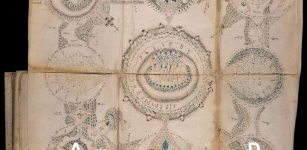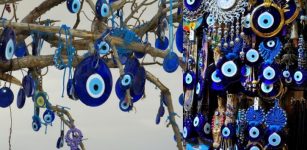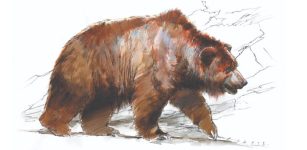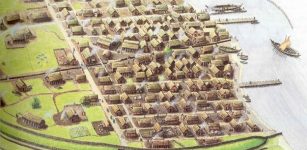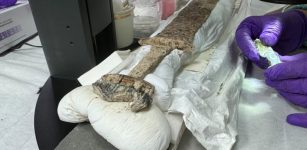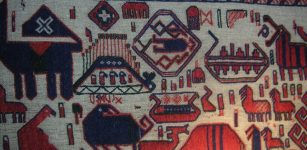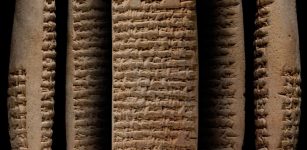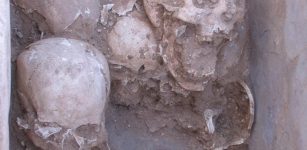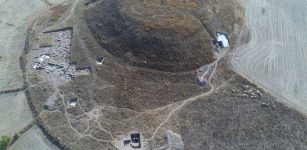Fascinating Virtual Avatar Of Mysterious Egtved Girl Created – What Is Her Story?
Jan Bartek - AncientPages.com - Found in 1921 near the village of Egtved, the remains of a girl who lived around 1370 B.C. are one of the best-known and intriguing Danish Bronze Age finds. The Egtved girl is still an archaeological mystery.
- Credit: National Museum in Copenhagen
Some years ago, scientists conducted strontium isotope analyses of the girl’s hair, teeth and nails, show that she was born and raised hundreds of miles from Egtved, most probably in the Black Forest area in Southern Germany, and that she arrived in Egtved shortly before she died. Today scientists have little doubt the Egtved girl came from far away, but how and why did she end up in Denmark?
That the Egtved Girl in all probability came from the Black Forest region in Germany comes as no surprise to professor Kristian Kristiansen from the University of Gothenburg; the archaeological finds confirm that there were close relations between Denmark and Southern Germany in the Bronze Age.
“In Bronze Age Western Europe, Southern Germany and Denmark were the two dominant centres of power, very similar to kingdoms. We find many direct connections between the two in the archaeological evidence, and my guess is that the Egtved Girl was a Southern German girl who was given in marriage to a man in Jutland so as to forge an alliance between two powerful families,” Kristiansen added.
The Egtved Girl's grave. Photo credit: National Museum of Denmark and University of Copenhagen
So far, experts have established that she was 16-18 years old when she died, her front teeth were worn, and she had shoulder-length medium-blonde hair and a vortex at the back of her head. An outline left by her body in the cowhide she was lying on reveals that she was about 160-165 centimeters tall. She was buried on a summer day in the year 1370 B.C. Ordinary people were not put to rest in a burial mound, indicating that the Egtved Girl must have been important.
But there's still a lot we don't know. Therefore, the researchers must resort to educated guesses when they recreate her skin type, facial features, and eye color. The Egtvedpige that guests meet digitally is based on 30-40% science.
"We know she was buried on a summer's day, so we made her a lighter tan. Her hair analysis indicates that the latter part of her life was hard. She has been sick or hungry for periods. That is why she has faint, red lines under her eyes", says Karin Margarita Frei.
In addition, she was given many things and gifts in the grave, which are also pieces of her life and destiny puzzle. One of the grave goods is a small comb.
"The Bronze Age was when people cared about their appearance. People fixed their hair, and the men shaved with small knives. We may well conclude that they were vain. It wasn't some savages who ran around with mud on their heads and couldn't figure out how to wash, that's why Egtvedpigen is also well-groomed," says Flemming Kaul.
Putting together her story is difficult because there were only a few of her earthly remains in her coffin. Hair, some skin, nails, clothes, enamel from her teeth, a bit of brain mass, and an imprint of her small, frail body. The bones are completely gone, but she still left several traces, so with the help of science, experts have revived a possible version of her digitally.
Scientists have revived her as a digital human with a voice and living facial expressions. Her face is built with the help of the latest technology, which is usually used in computer games like Fortnite and The Witcher and movies like Dune, Star Wars, and The Mandalorian.
That technology has not previously been used in a museum. But it helps bring the past to life for a wide audience.
"The Egtved Girl is important for our cultural heritage, and therefore it is crucial that we constantly increase the dissemination of her. Many visitors pass by her coffin and doubt whether she is actually lying there because the bones are gone. But now she draws attention to herself. At the same time, our desire is to create a stronger connection to the past, and this is best achieved if you can identify with a person from the past. Now you can come face to face with Egtved Girl", says exhibition editor Mette Boritz.
Written by Jan Bartek - AncientPages.com Staff Writer



